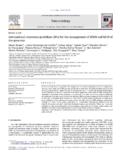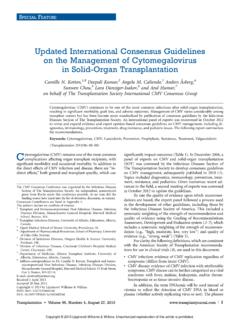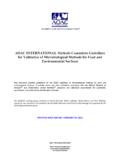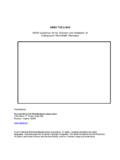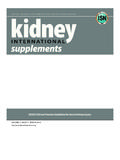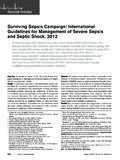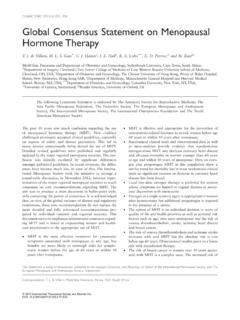Transcription of International Guidelines for the Determination of …
1 International Guidelines for the Determination of Death Phase I. May 30-31, 2012 . Montreal Forum Report Released October 2012 . International Guidelines for the Determination of Death Phase I. May 2012 Forum Report Copyright 2012 by Canadian Blood Services All rights reserved. No part of this document may be reproduced without permission in writing from Canadian Blood Services. For reprints, please contact: Canadian Blood Services 1800 Alta Vista Drive Ottawa, Ontario K1G 4J5. Canada 613-739-2300. Email: Canadian Blood Services assumes no responsibility or liability for any consequences, losses or injuries, foreseen or unforeseen, whatsoever or howsoever occurring, which might result from the implementation, use or misuse of any information or recommendations in the report, International Guidelines for the Determination of Death.
2 Phase I. This report contains recommendations that must be assessed in the context of a full review of applicable medical, legal and ethical requirements in any individual case. The views expressed herein do not necessarily represent the views of Canadian Blood Services and/or the World Health Organization and/or the Government of Canada. Production of this report has been made possible through a financial contribution from Health Canada. This forum was co-sponsored by Canadian Blood Services and the World Health Organization. i International Guidelines for the Determination of Death Phase I.
3 May 2012 Forum Report TABLE OF CONTENTS. FOREWORD: A GLOBAL iii EXECUTIVE SUMMARY .. v 1. FORUM OVERVIEW ..1. Committees ..1. Scope ..3. Forum Process ..4. Forum Agenda ..5. Introduction ..5. Challenge International Perspectives ..5. Assumptions and Key Considerations ..6. Presentations ..6. Consensus Discussions ..9. Closing Remarks ..9. 2. FORUM Terminology ..10. Death and the Brain ..14. Supplemental Reference Document ..14. Neurological Sequence in the Dying Process ..17. Minimum Acceptable Clinical Standard and Additional Tests for Cessation of Brain Function ..18. Preconditions Prior to Testing.
4 20. Confounding Conditions for Testing ..20. Key Considerations ..20. Death and Circulation ..22. Supplemental Reference Document ..22. Circulatory Sequence in the Dying Process ..24. Minimum Acceptable Clinical Standard and Additional Tests for Circulatory Arrest Causing Death ..25. Preconditions Prior to Testing ..27. Confounding Conditions for Testing ..27. Key Considerations ..27. Integrated Neurological and Circulatory Sequences ..28. Operational Definition of Human Death ..30. Supplemental Reference Document ..30. Operational Definition of Human Death ..31. Key Considerations.
5 32. Building Global Agreement Around Complex Practices ..33. Research Agenda ..34. Relevant Research Currently in Progress or Planning and Known to Participants ..34. Synthesis of Potentially Available Information ..34. New Biological and Clinical Information References ..36. Appendix A: Selected Bibliography ..39. Appendix B: Funding Disclosure ..44. Appendix C: Forum Participants ..46. ii International Guidelines for the Determination of Death Phase I. May 2012 Forum Report FOREWORD: A GLOBAL CHALLENGE. Humanity has thoughtfully struggled with the concept and criteria for death for millennia and the line'.
6 Between life and death continues to be debated. The profound changes brought about by organ failure support, organ replacement technology and transplantation continue to challenge our notions of life and death. While the discussions at this forum were about the Determination of death, this focus was based on a desire to maintain a reverence for life and to further inform when life ends in view of the ongoing advances in biological insight and technology. As with most discussions about death, the challenges are complex due to: Philosophical, religious, and cultural differences in the concept and definitions of death The difficulties in performing research in this field and the resultant deficits in information and evidence on a number of aspects of the dying process Controversies regarding the validity of death Determination practices Lack of understanding and/or awareness by the public and health professionals The emotionally charged nature of the subject matter Over the years.
7 Alarming language has emerged in the media and academic literature around death Determination and deceased donation practices1. It is difficult to distinguish valid scientific critique from those criticisms based on the fear of death itself, the fear of a mistaken diagnosis or a premature declaration of death, or the fear of retrieving organs from the living. Responsible scholarship and the best available, evidence-informed policies are required to address these well-publicized concerns. For the purposes of this forum, death was considered a biological event. Critical factors determining the success of this initial phase included the use of a common lexicon by all involved, a focus on the medical and physiological aspects of the dying process and Determination of death, and emphasis on a global perspective rather than regional interests.
8 This forum did not include discussion or debate about ethics, law, religion or culture. The concept of death with its attending religious, spiritual, philosophical, and cultural aspects was out of scope. Instead, participants worked toward agreement based on clinical practice, informed evidence and expertise of International experts to focus on what is observable and measureable the scientific, biological, medical aspects of the Determination of death in order to take steps towards building consensus in this important area. To develop this consensus a common terminology was established to support clarity and precision in the language used throughout this forum and subsequent phases of work.
9 The planning committee worked with participants to identify critical events that comprise the dying sequence with the understanding that death is a process based on cessation of function, and that the Determination of death is an event (a moment in time) in that process. Tests required for a minimum acceptable clinical standard for determining death were identified, before coming to consensus on an operational definition of human iii International Guidelines for the Determination of Death Phase I. May 2012 Forum Report death. The final task was to develop a research agenda and initiate the development of a plan for next steps based on the architecture and outputs derived from this forum.
10 Future phases in this initiative will focus on resolving outstanding issues, addressing unanswered questions and developing leading practice based on the best available science. This will involve systematic reviews of the literature and the grading of available evidence. Guidelines for the Determination of death must have application within a global perspective, with accessibility and utility in countries with diverse infrastructure and capabilities. It takes experience, proficiency, collaboration and commitment by all involved to make an event like this a productive process.










